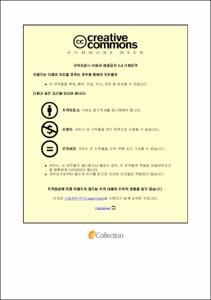고전 분자동역학 시뮬레이션을 통한 LiCoO2 속 리튬 이온의 성질 연구
- Alternative Title
- Study of Properties of Lithium Ions in LiCoO2 with Classical Molecular Dynamics Simulations
- Abstract
- 고전적 분자 동역학(molecular dynamics, MD) 시뮬레이션은 전극 전위나 내부 이온의 이동도와 같은 전극 재료물질의 성질들을 예측하는 데 사용될 수 있다. 전극 전위는 이온의 자유에너지 변화로부터 계산될 수 있고, 이온의 이동도는 분자 동역학 계산을 통해 얻어진 궤적(trajectory) 파일을 분석함으로써 추정 가능하다. 이 연구에서 우리는 리튬 이온 배터리(lithium ion battery, LIB)의 양극 재료로 잘 알려져 있는 LiCoO2에 대한 분자동역학 시뮬레이션을 실시했다. 목표 물질의 자유에너지 계산을 위해 등온, 등압 조건 (NpT)을 주어thermodynamic integration (TI), free energy perturbation (FEP), Bennett acceptance ratio (BAR) 방법을 적용하였다. 이온 이동도의 계산을 위한 MD시뮬레이션은 등온, 등적의 조건 (NVT)을 이용해 평형화 한 후 에너지 보존 앙상블 (NVE)을 통해 진행되었다. 시뮬레이션에 사용된 모든 원자들은 포스 필즈 (Force fields)를 이용하여 기술되었다.
Classical molecular dynamics (MD) simulations can be used to predict certain properties of electrode materials, such as electrode potential and ion mobility. Electrode potential can be calculated from free energy change of ions, while ion mobility can be estimated from MD trajectories. In the present study, we performed MD simulations for LiCoO2, a well-known cathode material for lithium-ion batteries (LIB), and computed the cell voltage and ion mobility. To calculate free energy, we applied thermodynamic integration (TI), free energy perturbation (FEP), and Bennett acceptance ratio (BAR) method under conditions of constant temperature and pressure (NpT). Mobility of lithium ions was estimated from MD simulations carried out by constant energy ensemble (NVE) that are equilibrated in the condition of constant temperature and volume (NVT). All atoms were described by Force fields.
- Issued Date
- 2018
- Awarded Date
- 2018.2
- Type
- Dissertation
- Publisher
- 부경대학교
- Affiliation
- 부경대학교 대학원
- Department
- 대학원 화학과
- Advisor
- 이명원
- Table Of Contents
- 1 Introduction 1
2 Computational Details 6
2.1 Force Fields 6
2.1.1 Nonbonded interactions 9
2.1.2 Bonded interactions 15
2.2 Molecular dynamics 18
2.2.1 Newton’s equation of motion 18
2.2.2 Potential cutoff 20
2.2.3 Periodic boundary conditions (PBC) 22
2.2.4 Ensembles 26
2.3 Free energy calculation 27
2.3.1 Thermodynamic integration 28
2.3.2 Free energy perturbation 29
2.3.3 Bennett acceptance ratio 30
2.3.4 Soft core potential 30
2.4 Mobility of ions 31
3 Results and Discussion 32
3.1 Free energy calculation 32
3.2 Ionic mobility 48
4 Conclusion 58
References 59
APPENDIX 66
- Degree
- Master
- Files in This Item:
-
-
Download
 고전 분자동역학 시뮬레이션을 통한 LiCoO2 속 리튬 이온의 성질 연구.pdf
기타 데이터 / 6.02 MB / Adobe PDF
고전 분자동역학 시뮬레이션을 통한 LiCoO2 속 리튬 이온의 성질 연구.pdf
기타 데이터 / 6.02 MB / Adobe PDF
-
Items in Repository are protected by copyright, with all rights reserved, unless otherwise indicated.